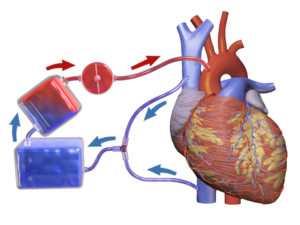- Home
- Editorial
- News
- Practice Guidelines
- Anesthesiology Guidelines
- Cancer Guidelines
- Cardiac Sciences Guidelines
- Critical Care Guidelines
- Dentistry Guidelines
- Dermatology Guidelines
- Diabetes and Endo Guidelines
- Diagnostics Guidelines
- ENT Guidelines
- Featured Practice Guidelines
- Gastroenterology Guidelines
- Geriatrics Guidelines
- Medicine Guidelines
- Nephrology Guidelines
- Neurosciences Guidelines
- Obs and Gynae Guidelines
- Ophthalmology Guidelines
- Orthopaedics Guidelines
- Paediatrics Guidelines
- Psychiatry Guidelines
- Pulmonology Guidelines
- Radiology Guidelines
- Surgery Guidelines
- Urology Guidelines
Intraoperative Autologous blood transfusion benefits children in cardiac surgeries

The use of autologous intraoperative blood collection and retransfusion is a feasible option for small children with complex congenital heart defects undergoing cardiopulmonary bypass, according to a study recently published in the journal Pediatric Anaesthesia.
Although allogeneic blood product transfusion is common in pediatric patients undergoing cardiopulmonary bypass, it is associated with an increased risk for adverse events. Moreover, numerous donor exposures may affect future blood transfusion needs and human leukocyte antigen matching for patients who may ultimately require cardiac transplantation.
Kaiser and associates conducted a study to assess the feasibility of this blood conservation technique in small children with complex congenital heart defects undergoing cardiopulmonary bypass.
Read Also: ISA Cardiopulmonary Resuscitation Guidelines
The researchers retrospectively reviewed the medical records of children weighing <10 kg who underwent cardiopulmonary bypass over a 2-year period.The study group comprised of eighteen patients who underwent autologous intraoperative blood collection and retransfusion. Eighteen control patients were chosen by a 1:1 matched design using preoperative hematocrit, surgical procedure, and body weight. Multiple corresponding demographic and surgical variables, transfusion data, and clinical outcomes were compared.
Study findings:
- Patient demographics, operative parameters and preoperative laboratory, and coagulation values were similar between the two groups.
- Despite the removal of autologous blood, study patients did not require more inotropic support prior to cardiopulmonary bypass.
- No significant increase was observed in bleeding as measured by 24-hour postoperative chest tube output.
- Study patients were exposed to significantly fewer donor units intraoperatively and within the first 24 hours postoperatively.
The authors concluded that the study patients received significantly fewer donor exposures without an increase in postoperative bleeding and children who require multiple cardiac surgeries or eventually transplantation could benefit from this blood conservation technique.
Cardiopulmonary bypass (CPB) is a technique that temporarily takes over the function of the heart and lungs during surgery, maintaining the circulation of blood and the oxygen content of the patient's body.
For reference log on to http://10.1111/pan.13449

Disclaimer: This site is primarily intended for healthcare professionals. Any content/information on this website does not replace the advice of medical and/or health professionals and should not be construed as medical/diagnostic advice/endorsement or prescription. Use of this site is subject to our terms of use, privacy policy, advertisement policy. © 2020 Minerva Medical Treatment Pvt Ltd